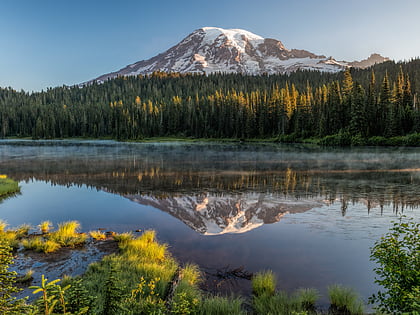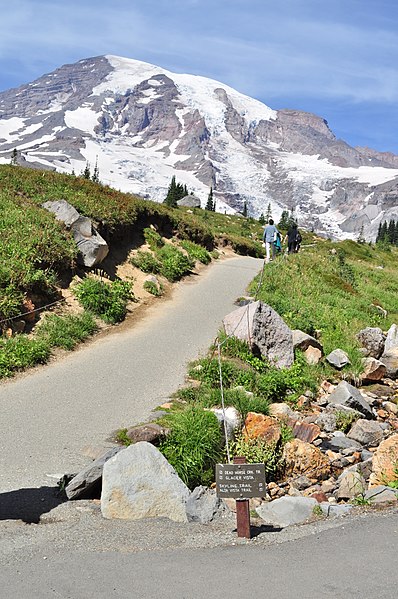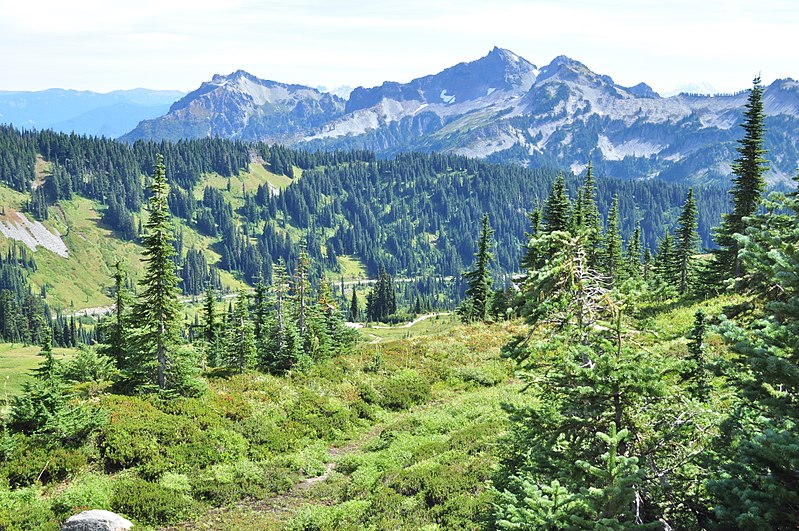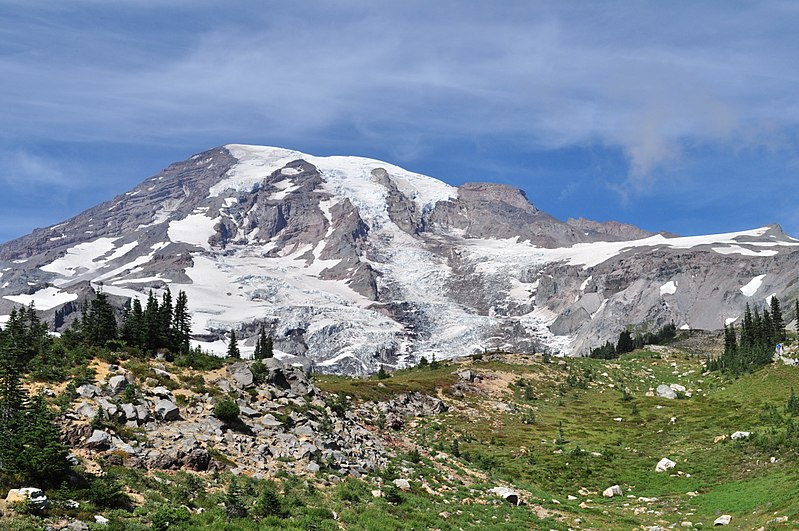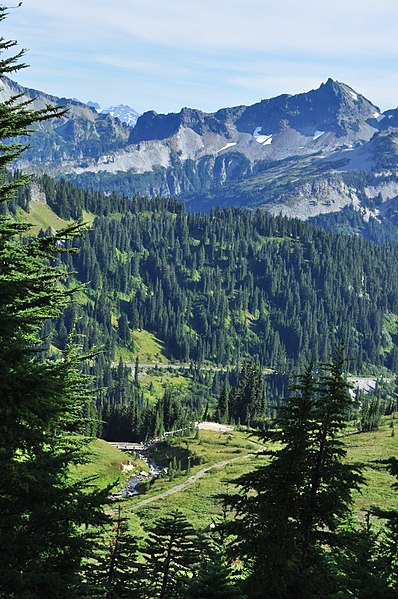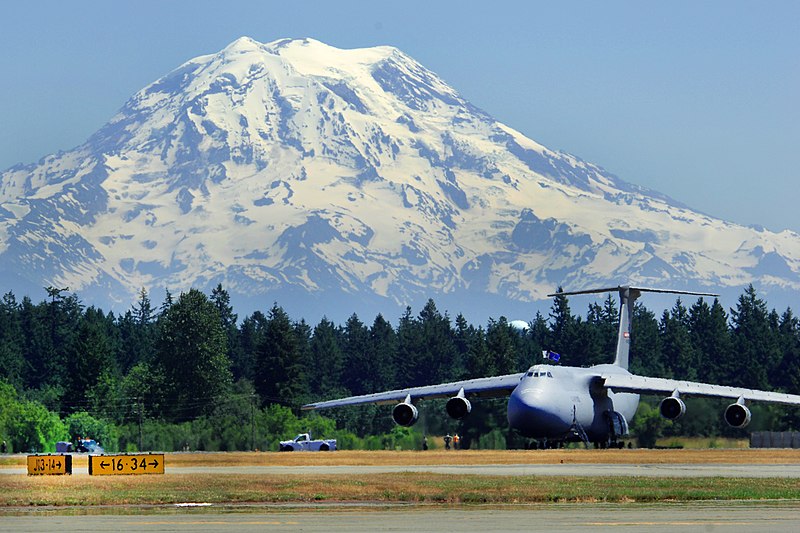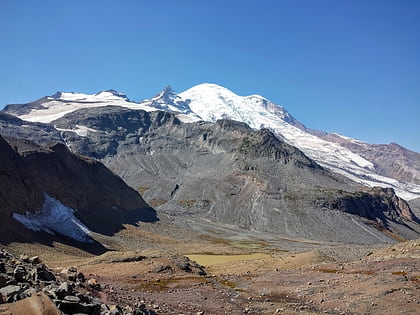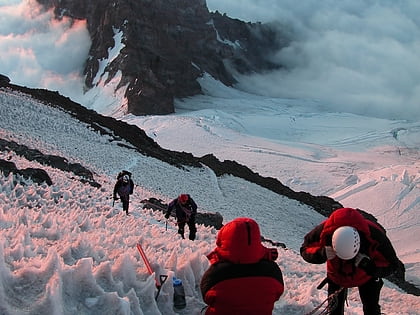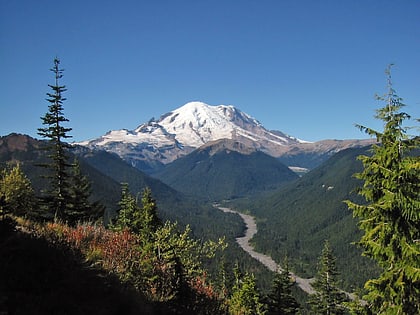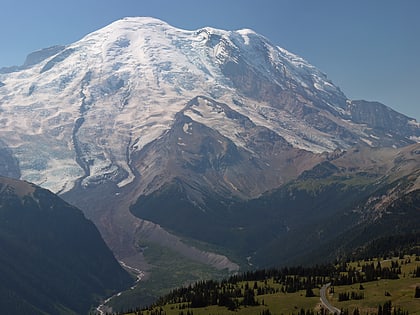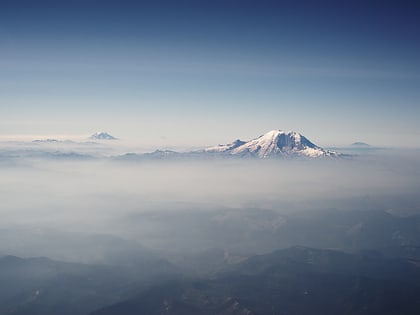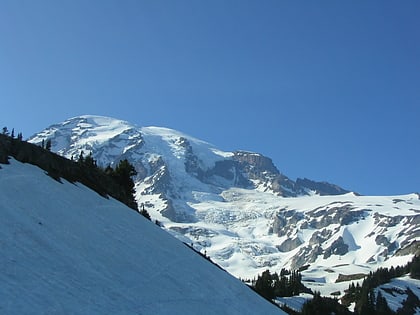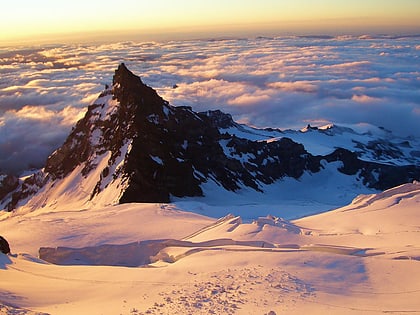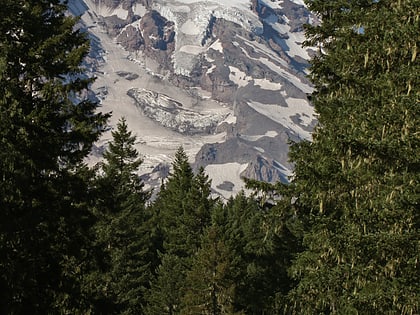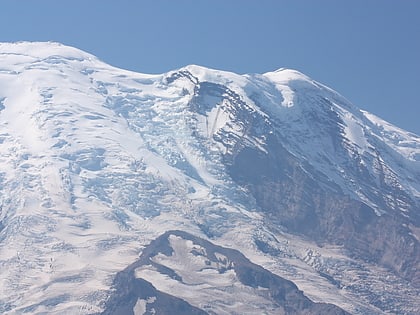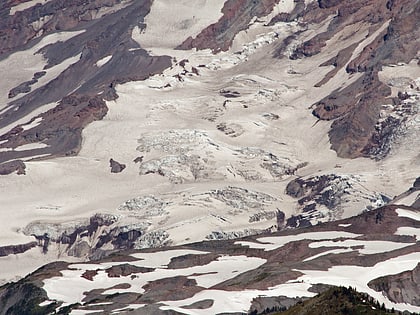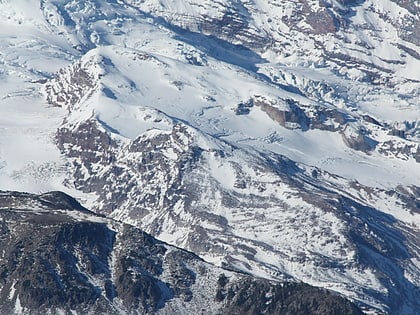Mount Rainier, Mount Rainier National Park
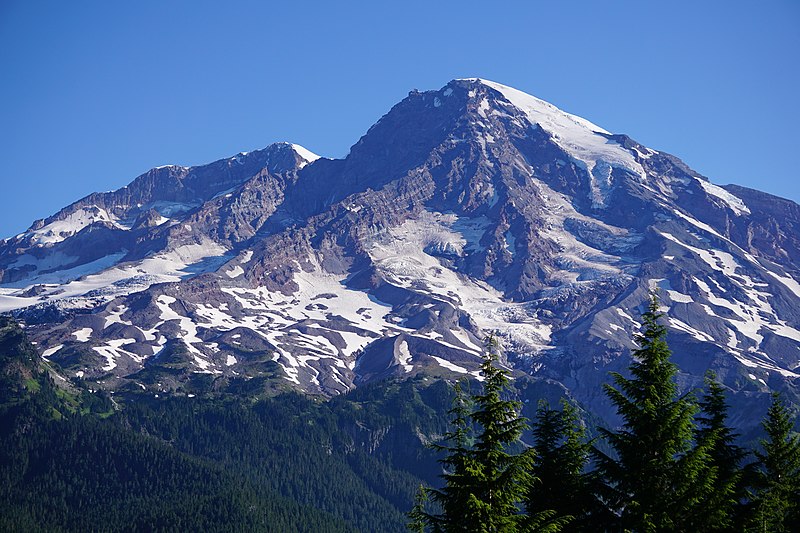
Facts and practical information
Mount Rainier, an icon of Washington State's landscape, dominates the skyline with its staggering height and majestic presence. This active stratovolcano, standing at an impressive 14,411 feet, is the centerpiece of Mount Rainier National Park and a must-visit destination for nature lovers and adventurers alike.
The mountain is not only renowned for its scenic beauty but also for its challenging hiking trails, which attract thousands of climbers each year. The most popular route to the summit is the Disappointment Cleaver Route, which requires preparation and experience in glacier travel. For those who prefer less strenuous activities, there are numerous trails at lower elevations that offer equally breathtaking views and the opportunity to witness the park's diverse flora and fauna.
Visitors can explore the park's old-growth forests, subalpine meadows filled with wildflowers, and over 25 glaciers that feed into the surrounding rivers and lakes. The park operates year-round, although accessibility to some areas may be limited during the winter months due to heavy snowfall.
Mount Rainier National Park also provides various educational programs and visitor centers, such as the Henry M. Jackson Memorial Visitor Center at Paradise, which offer insights into the mountain's geology, ecology, and history. Accommodations range from campgrounds for the outdoor enthusiast to historic lodges like the Paradise Inn for those seeking comfort after a day of exploration.
Mount Rainier – popular in the area (distance from the attraction)
Nearby attractions include: Wonderland Trail, Ingraham Glacier, Cascade Volcanoes, Emmons Glacier.
